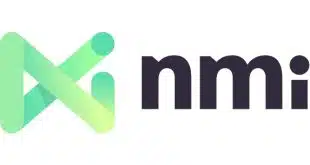With the deadline just three months away, the banking industry is scrambling to implement IAT, the new automated clearing house code for international transactions. IAT originally was to take effect March 20. But NACHA?The Electronic Payments Association, governing body of the ACH, last July pushed it back to Sept. 18, 2009, to give financial institutions more time to prepare (Digital Transactions News, Aug. 5, 2008). There won't be any more extensions, says Priscilla Holland, senior director of international programs at Herndon, Va.-based NACHA. “I think from a bank's perspective, banks are aware of what's happening, they are preparing and will be ready in September,” she says. NACHA created IAT in 2007 as a result of the U.S. Treasury Department's efforts to align the ACH with its anti-money-laundering efforts. IAT transactions will be more complex for the banking system to handle in part because they'll be screened against the Specially Designated Nationals & Blocked Persons list, or SDN, from the Treasury's Office of Foreign Assets Control (OFAC). The lengthy list names foreign people and organizations banned from financial transactions in the United States because of their links to terrorists, drug trafficking, or other illicit activities. IAT will replace two existing ACH codes for cross-border payments?PBR, for consumer payments, and CBR, for non-consumer transactions. These codes require separate batches for international payments to keep them distinct from domestic ones, which leads to a higher incidence of exception processing and a higher risk of non-compliance with regulations, according to a July 2008 report from research firm Aite Group LLC. This summer will be a very busy time of preparation for banks, the nation's two ACH operators?the Federal Reserve and The Clearing House Payments Co. L.L.C.'s Electronic Payments Network?and ACH software vendors. Many observers say the run-up to IAT has been time-consuming and costly. Nancy Atkinson, the analyst with Boston-based Aite who wrote last year's report, originally estimated IAT would cost banks $46 million, including $25 million spent by the top 100 financial institutions. Now, based on follow-up interviews with industry executives, she calculates total costs will be about $150 million. The difference comes from the unanticipated amount of resources going into IAT-related operations beyond just the hard-core information technology. “It's more than the IT hours, it's the project management,” Atkinson says. The current PBR and CBR codes generated only 1.21 million transactions in 2008, with PBR accounting for more than 99% of volume. But OFAC last year estimated that 35 million to 40 million transactions each year that originate in other countries but are treated as domestic ACH items likely would be subject to IAT's rules, banking-industry executives say. In a March survey, 27% of regional commercial-bank respondents told the Federal Reserve they would be ready for IAT before the Sept. 18 deadline, 68% said they would be ready in time for the deadline, and 5% said, “we have concerns” about being ready. For community or savings banks, the respective answers were 28%, 67%, and 4%. And for credit unions, the respective replies were 33%, 57%, and 10%. “There are people testing with us, the number of people testing with us is growing, but it's not growing at the type of aggressive rate we would like to see,” says Richard R. Oliver, executive vice president of the Federal Reserve Bank of Atlanta and the Federal Reserve Banks' product manager for retail payments. IAT is the subject of a story in Digital Transactions magazine's upcoming July issue.
Check Also
NMI Taps Mastercard to Power Its New Tap-to-Pay Service for Small Merchants Eyeing Mobile Payments
With an eye on small merchants, payment processor NMI on Thursday announced a tap-to-pay feature …




